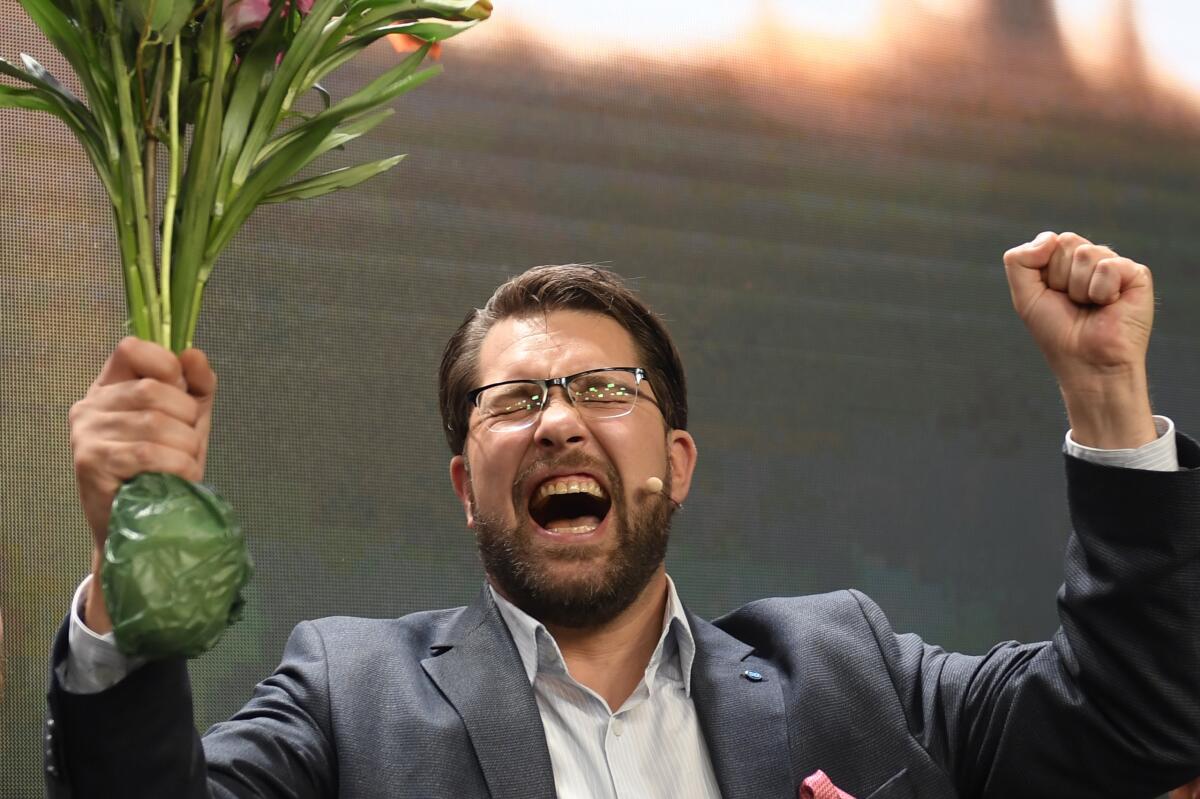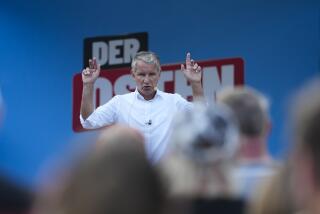Swedish conservatives appear to win election amid crime fears

STOCKHOLM — Near final results in Sweden’s election Sunday show that a bloc of right-wing parties was expected to defeat a left-wing bloc headed by Prime Minister Magdalena Andersson. The conservative group includes a populist anti-immigration party that made its best-ever showing.
However, the result was so close that the election authority said it would not be known before Wednesday, when some uncounted votes, including those cast abroad, have been tallied.
According to the early count, Andersson’s ruling left-wing Social Democrats won 30.5% of the vote, more than any other party. However a bloc of four left-wing parties appeared to fall short as a whole of winning a majority of votes in the 349-seat parliament, or Riksdag.
Exit polls had initially predicted a narrow victory for Andersson’s camp but as the evening wore on, and the vote count supplanted the exit poll, the results tipped in favor of the conservatives.
Early Monday, the conservatives appeared to have 176 seats to 173 for the center-left.
Ukraine’s effort to reclaim Russia-occupied areas in the Kharkiv region forced Moscow to withdraw its troops to prevent them from being surrounded.
In a speech to her supporters, Andersson said that while the results were unclear, it was obvious that the social democratic movement, which is based on ideals of creating an equal society and a strong welfare state, remains strong in Sweden.
The biggest winner of the evening was the populist anti-immigration party, the Sweden Democrats, which had a strong showing of nearly 21%, its best result ever. The party gained on promises to crack down on shootings and other gang violence that have shaken a sense of security for many in Sweden.
The party has its roots in the white nationalist movement but years ago began expelling extremists. Despite its rebranding, voters long viewed it as unacceptable and other parties shunned it. But that has been changing, and its result in this election show just how far it has come in gaining acceptance.
“We are now the second-biggest party in Sweden and it looks it’s going to stay that way,” party leader Jimmie Akesson told his supporters.
“We know now that if there’s going to be a shift in power, we will be having a central role in that,” he said. “Our ambition is to be in the government.”
The conservative bloc was led during the campaign by the center-right Moderates, who won 19%. The party previously had been the country’s second-largest.
Moderates leader Ulf Kristersson told his supporters that he stands ready to try to create a stable and effective government.
Regardless of the election outcome, Sweden is likely to face a lengthy process to form a government, as it did after the 2018 election.
Andersson, a 55-year-old economist, became Sweden’s first female prime minister less than a year ago and led Sweden’s historic bid to join the North Atlantic Treaty Organization after Russia’s invasion of Ukraine in February.
More to Read
Sign up for Essential California
The most important California stories and recommendations in your inbox every morning.
You may occasionally receive promotional content from the Los Angeles Times.











